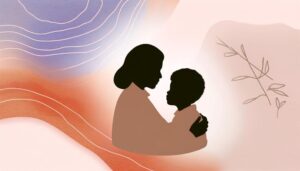What Does the Celtic Knot Symbolize in Family Connections?
The Celtic knot, originating in the early medieval period of the British Isles, epitomizes familial unity and ancestral heritage through its intricate, unbroken loops. These designs reflect the interconnectedness and eternal love inherent in family relationships.
Historically, they adorned illuminated manuscripts like the Book of Kells, blending Celtic styles with Christian iconography. Modern interpretations use diverse materials and vibrant colors to enhance their symbolic impact, making them prevalent in jewelry and home decor.
This eternal design underscores the enduring nature of familial bonds, offering deep cultural significance that continues to resonate today. Explore further to uncover the profound meanings behind specific knot variations.
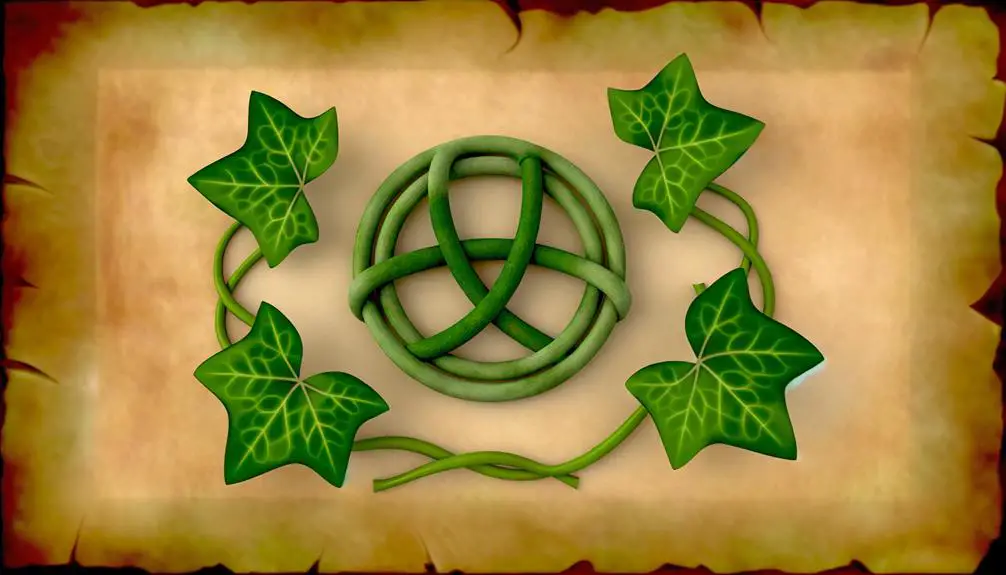
Key Takeaways
- Celtic knots symbolize the unbreakable bonds and eternal love within families.
- The intricate, interconnected lines represent unity and continuity in familial relationships.
- They reflect heritage and ancestral roots, connecting past and present generations.
- Celtic knots are often used in jewelry and home decor to celebrate and reinforce familial bonds.
- The endless loops of the knot signify the enduring nature of family connections.
Origins of the Celtic Knot
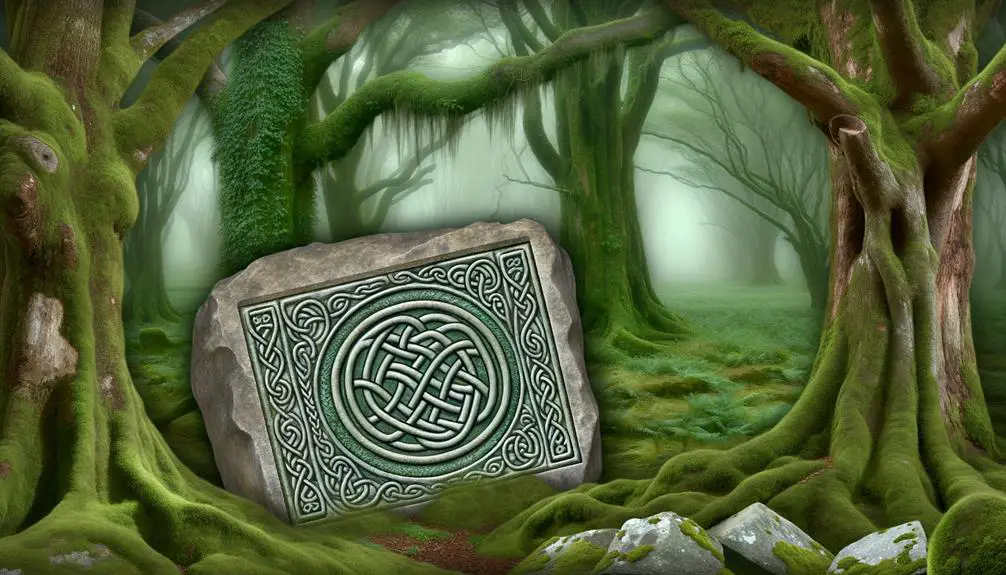
How did the intricate and symbolic design of the Celtic knot come to be, and what historical and cultural contexts influenced its origins?
The genesis of the Celtic knot can be traced back to the early medieval period, specifically within the insular art of the British Isles. This period, spanning roughly from the 7th to the 10th centuries, saw a fusion of indigenous Celtic styles with Christian iconography, as evidenced by illuminated manuscripts like the Book of Kells.
The complex interwoven patterns reflect the Celts' deep appreciation for nature, continuity, and the interconnection of life. Additionally, the influence of Roman and Norse art cannot be overlooked, as these cultures also contributed to the evolving aesthetic that culminated in the distinctive, enduring motifs of the Celtic knot.
Symbolism and Meanings
The Celtic knot's intricate interwoven line patterns serve as a profound metaphor for the interconnectedness and continuity of familial relationships.
This symbol, often associated with eternal love, encapsulates the enduring bonds that transcend time and space within a family unit.
Additionally, its cultural significance is deeply rooted in Celtic traditions, where such motifs were believed to embody the unity and cyclical nature of life.
Interwoven Line Patterns
Interwoven line patterns in Celtic knot designs, often characterized by their intricate loops and endless pathways, symbolize the interconnectedness and continuity of life and familial bonds. These patterns, deeply embedded in Celtic art, convey profound meanings through their complexity. Specifically, they highlight:
- Unity: The seamless loops represent the unity and cohesion within a family.
- Eternity: The endless nature of the designs signifies the perpetual nature of familial relationships.
- Interdependence: Each loop and line relies on the other, much like family members depend on one another.
- Heritage: The patterns connect to ancestral roots, reflecting the transmission of values and traditions through generations.
Through these elements, Celtic knots encapsulate a rich tapestry of meanings pertinent to family life and heritage.
Eternal Love Representation
Building upon the intricate symbolism of unity and continuity found in Celtic knot designs, the motif of eternal love is vividly portrayed through its endless loops and interwoven pathways, representing the timeless and unbreakable bonds of affection and commitment within a family.
Each loop's seamless connection to another embodies the perpetual cycle of love and loyalty, transcending the temporal constraints of human existence. The unbroken, intricate patterns serve as metaphors for the enduring nature of familial relationships, suggesting an eternal embrace that withstands the passage of time.
This symbolism underscores an ideal of love that remains constant and unwavering, deeply rooted in the shared experiences and collective memories that define family life.
Cultural Significance Explained
Celtic knots, with their intricate and unending patterns, hold profound cultural significance, as they encapsulate the essence of interconnectedness and the cyclical nature of life within Celtic tradition. These symbols are not merely decorative; they embody deep meanings that resonate with the values and beliefs of Celtic people.
The following are key symbolic interpretations:
- Eternity: The unbroken loops signify eternal life and the infinite nature of the universe.
- Unity: The knots represent the interconnectedness of all beings and the unity in diversity.
- Heritage: They embody the rich cultural heritage passed down through generations.
- Spirituality: The complex designs evoke spiritual growth, reflecting life's journey and inner development.
These elements contribute to the knot's enduring appeal and timeless relevance.
Family Connections
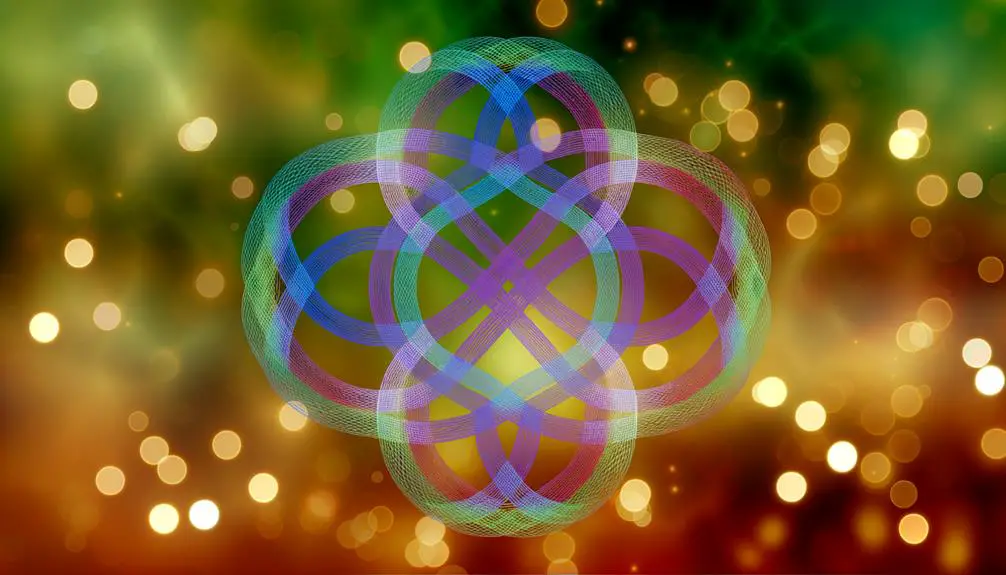
The intricate design of Celtic knots often symbolizes the unbreakable bonds and interconnectedness of family relationships, reflecting the profound cultural emphasis on kinship and heritage. These knots, with their endless loops and intricate patterns, represent the eternal and cyclical nature of familial connections, transcending time and generations. The symbols are often used to depict the integration of past, present, and future family members, reinforcing the idea that each individual is an integral part of a larger, cohesive whole.
| Aspect | Symbolism | Interpretation |
|---|---|---|
| Endless Loops | Eternity | Family bonds that are timeless and unending |
| Interwoven Paths | Interconnectedness | The interdependence and mutual support among family members |
| Complex Patterns | Heritage | The intricate history and lineage that shape family identity |
This synergy of symbolism encapsulates the essence of family as a deeply interconnected and enduring unit.
Knot Designs and Variations
Various knot designs and their numerous variations reflect the rich tapestry of Celtic culture, each pattern imbued with unique historical and symbolic meanings. The intricate interlacing lines are not mere artistic expressions but encapsulate profound narratives and traditions.
Among the myriad designs, four prominent variations stand out:
- Triquetra Knot – Symbolizes the trinity and eternal life.
- Sailor's Knot – Represents love, friendship, and affection.
- Celtic Cross – Combines Christian symbolism with Celtic heritage.
- Trinity Knot – Depicts the interconnectedness of life, death, and rebirth.
These patterns are meticulously crafted, demonstrating the Celts' dedication to their beliefs and artistic prowess. Each knot design serves as a tribute to the enduring legacy of Celtic heritage.
Cultural Significance
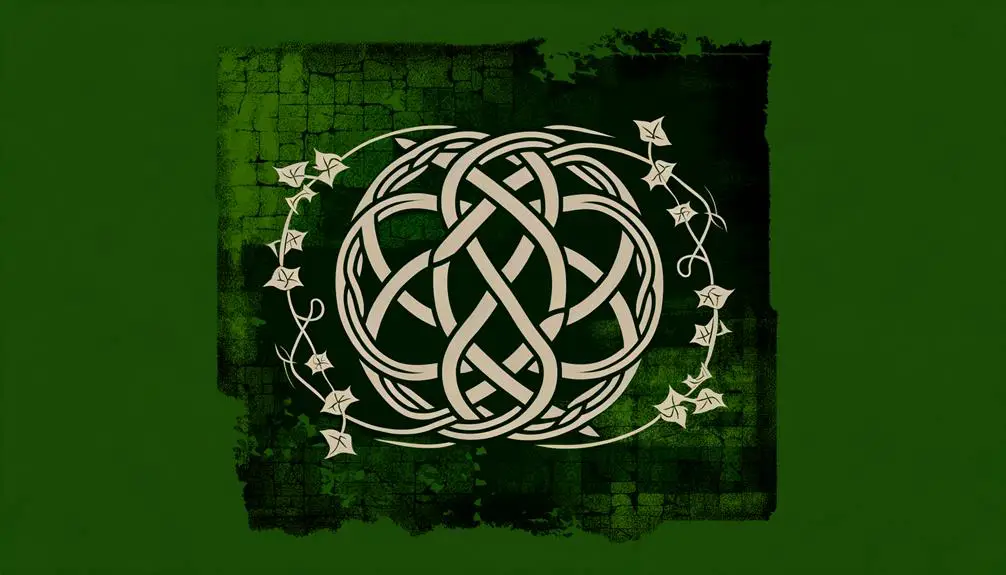
Interwoven in the fabric of ancient traditions, Celtic knot symbols serve as profound representations of familial bonds and cultural identity. These intricate designs, often featuring endless loops, encapsulate the unbroken continuity of life and relationships.
Historically rooted in the Celtic regions of Ireland, Scotland, and Wales, these symbols are imbued with meanings that transcend mere aesthetics. They reflect the interconnectedness of all existence, emphasizing unity and eternity.
Families have long embraced these motifs to signify unyielding love and loyalty, a attestation to their enduring legacy. The cultural significance of Celtic knots extends beyond mere ornamentation, embedding itself deeply within the rituals, art, and heritage of the Celtic peoples, thereby perpetuating a timeless tradition of connectedness.
Modern Interpretations
In contemporary society, the Celtic knot symbol has been adapted to reflect modern design trends, often seen in jewelry, tattoos, and home decor that emphasize its aesthetic appeal.
Personal connection stories further highlight its enduring resonance, as individuals adopt the symbol to represent their own familial bonds and heritage.
Additionally, the cultural symbolism of the Celtic knot today continues to evolve, maintaining its relevance while being reinterpreted in diverse contexts across the globe.
Contemporary Design Trends
Contemporary design trends have reimagined the Celtic knot symbol for family, blending traditional aesthetics with modern minimalism to create pieces that resonate with today's sensibilities.
This evolution in design is characterized by several key elements:
- Simplified Patterns: Designers are opting for cleaner lines and less intricate details, making the symbol more versatile for various applications.
- Mixed Media: The incorporation of different materials such as metals, woods, and resins adds a contemporary twist while maintaining the symbolic integrity.
- Color Innovation: Moving beyond traditional monochromatic schemes, contemporary designs often feature vibrant colors to enhance visual appeal.
- Functional Art: Items like jewelry, home decor, and fashion accessories are being created, allowing the Celtic knot to be both a symbol of family and a functional piece.
Personal Connection Stories
As contemporary design trends breathe new life into the Celtic knot symbol for family, individuals are finding profoundly personal ways to connect with and interpret this ancient motif in their modern lives. These personal connection stories often highlight how the symbol embodies unity, continuity, and a sense of belonging. From tattoos to jewelry, people use the Celtic knot to represent their family connections, heritage, and personal growth.
| Personal Connection | Story Example |
|---|---|
| Tattoo | A mother and daughter share matching Celtic knot tattoos to symbolize their unbreakable bond. |
| Jewelry | A family heirloom Celtic knot necklace passed down through generations to signify unity. |
| Home Decor | A Celtic knot wall art piece in the living room, reminding the family of their shared heritage. |
| Wedding Bands | Couples choose Celtic knot rings to represent eternal love and interconnectedness. |
| Art | A personalized Celtic knot painting created to capture a family's unique history. |
These stories manifest the timeless relevance of the Celtic knot in forming heartfelt connections today.
Cultural Symbolism Today
While the Celtic knot's origins are deeply rooted in ancient history, its modern interpretations reflect a diverse array of cultural meanings that continue to resonate with contemporary audiences. Today, the Celtic knot is often perceived through various lenses:
- Spiritual Symbolism: Often used in modern spiritual practices, it symbolizes eternity and interconnectedness.
- Artistic Expression: Artists incorporate the intricate designs into tattoos, jewelry, and visual art to convey heritage and personal narratives.
- Cultural Identity: For many, it serves as a potent emblem of Celtic heritage and pride.
- Family Unity: Frequently adopted as a symbol of familial bonds, representing the unbroken and everlasting nature of family connections.
These interpretations demonstrate the Celtic knot's enduring relevance and adaptability in modern culture.
Incorporating Knots in Daily Life
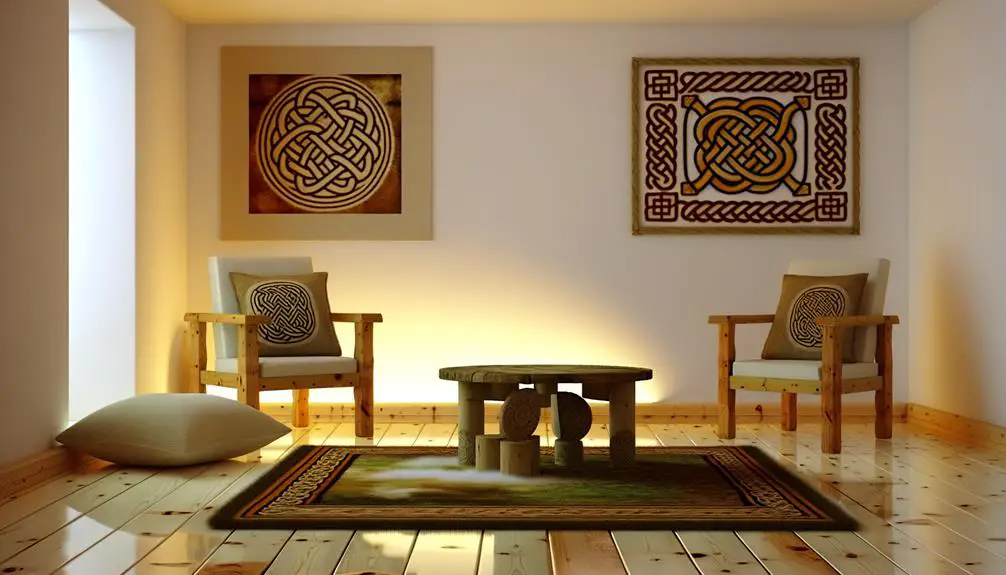
Integrating Celtic knot symbols into everyday life can serve as a meaningful way to celebrate and reinforce familial bonds through various mediums. The intricate designs of Celtic knots, imbued with deep historical and cultural significance, offer a tangible connection to heritage.
Jewelry pieces like pendants and rings can be personalized to reflect individual family connections. Home decor items, such as wall art or embroidered textiles, can create a warm, familial atmosphere. Personal accessories, including keychains and bookmarks, provide daily reminders of familial unity.
These applications not only adorn one's surroundings but also serve as perpetual symbols of the interconnectedness and continuity that define family relationships, making them a cherished part of daily life.
Choosing the Right Knot
Selecting the appropriate Celtic knot design involves considering the specific meanings and symbolism associated with each knot, making sure that the chosen motif authentically represents the values and connections inherent within one's family. This selection process requires a careful analysis of various knot types, each carrying unique connotations.
- Trinity Knot (Triquetra): Symbolizes the interconnectedness of mind, body, and spirit, suitable for families valuing holistic unity.
- Lover's Knot: Represents eternal love and loyalty, ideal for families emphasizing strong romantic and emotional bonds.
- Sailor's Knot: Denotes strength and friendship, perfect for familial relationships based on mutual support and resilience.
- Dara Knot: Stands for inner strength and wisdom, fitting for families that prioritize heritage and personal growth.
This thoughtful approach guarantees that the selected knot conveys the desired familial ethos.
Conclusion
The exploration of the Celtic knot symbol reveals rich origins, intricate symbolism, and profound meanings, especially in the context of family connections.
The various knot designs and their cultural significance offer a tapestry of historical and contemporary interpretations.
Modern adaptations continue to breathe life into these ancient symbols, incorporating them into daily life.
Ultimately, choosing the right knot for personal significance encapsulates a timeless tradition, a connection to heritage, and an enduring representation of familial bonds.


